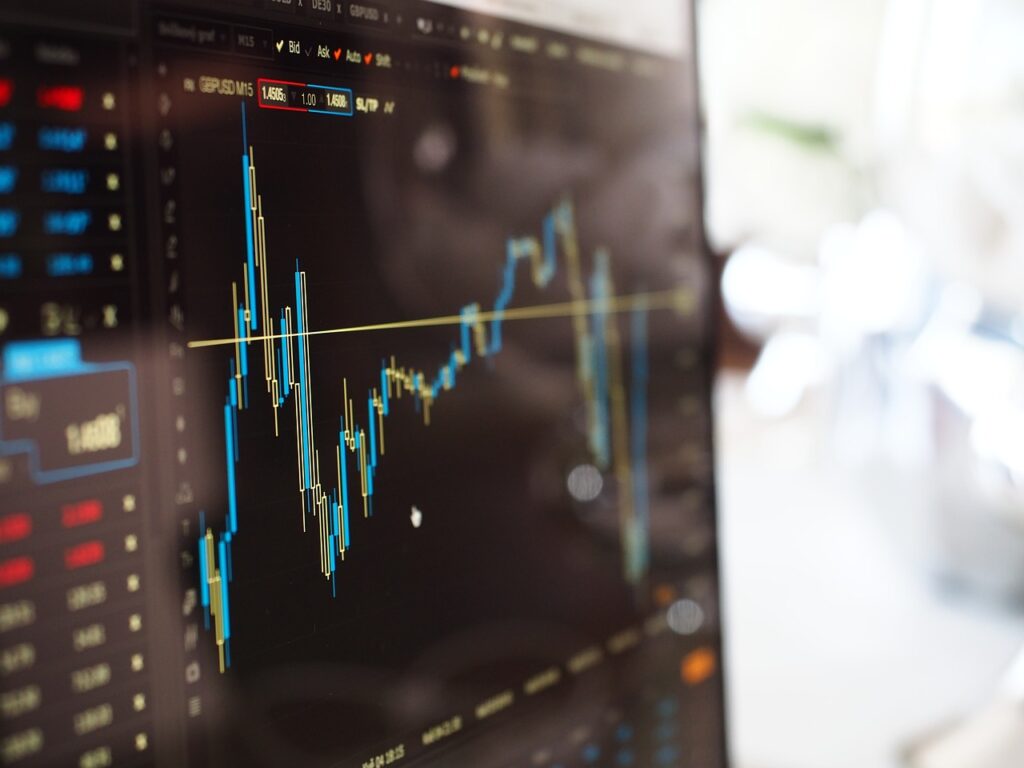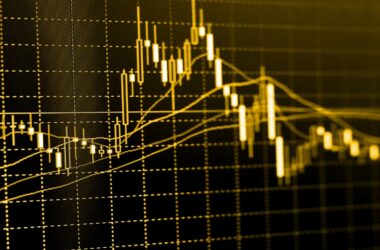In the ever-evolving landscape of financial markets, one phenomenon has captured the attention of traders, investors, and regulators alike: High-Frequency Trading (HFT). The rapid advancements in technology over the past few decades have paved the way for a new era of trading where milliseconds can make all the difference. High-Frequency Trading involves executing many transactions in a fraction of a second, leveraging sophisticated algorithms and cutting-edge infrastructure. This approach promises unparalleled speed and efficiency, but it also raises a host of contentious issues. As proponents hail its potential for enhancing market liquidity and price discovery, skeptics voice concerns about its impact on market stability and fairness.

In this comprehensive exploration, we delve into the world of High-Frequency Trading, weighing its pros and cons while assessing its profound influence on modern financial ecosystems. From its inception to its current state, we navigate the intricate web of benefits, drawbacks, and broader market implications, shedding light on the intricate interplay between technology, finance, and regulation. Join us as we unravel the complexities of High-Frequency Trading, dissecting its multifaceted nature and examining its role in shaping contemporary financial markets.
High-frequency trading (HFT) is a type of algorithmic trading that uses high-speed computers to execute trades in milliseconds or even microseconds. HFT firms typically use a variety of strategies to profit from market inefficiencies, including:
High-frequency trading (HFT) represents a revolutionary facet of algorithmic trading, where split-second decisions wield immense power in the world of finance. Powered by high-speed computers capable of executing trades within milliseconds or even microseconds, HFT firms have reshaped the dynamics of trading through their lightning-fast operations. In the pursuit of capitalizing on minuscule price differentials and fleeting market anomalies, these firms employ a spectrum of strategies, each designed to exploit and profit from various market inefficiencies.
One pivotal strategy employed by High-Frequency Trading firms is market-making. By perpetually engaging in the buying and selling of securities at slightly disparate prices, these firms assume the role of facilitators, ensuring that the market maintains a steady stream of liquidity. This, in turn, creates an environment where other traders can confidently transact, knowing that there will always be a willing counterparty available. The market-making prowess of HFT firms has significantly bolstered the overall fluidity of financial exchanges, contributing to the seamless execution of trades for traders across the spectrum.
Another strategy wielded by HFT firms is arbitrage. Drawing inspiration from the concept of exploiting price discrepancies between different markets, these firms swiftly identify instances where securities can be bought on one exchange and subsequently sold on another for an instantaneous profit. This form of arbitrage leverages the slight time lags between market venues to capitalize on temporary pricing divergences. By doing so, HFT firms harness the power of technology to capitalize on opportunities that would otherwise be elusive to human traders, thereby maximizing their profit potential.
Intriguingly, HFT firms also embrace trend-following as a strategy. By scrutinizing intricate patterns and trends in market data through the lens of technical analysis, these firms endeavor to predict the direction in which prices are likely to move. Armed with this foresight, an High-Frequency Trading firm might choose to purchase a security in anticipation of an impending price surge or decline, based on their interpretation of market trends. This strategy, too, underscores the pivotal role of technology in enabling traders to react instantaneously to evolving market dynamics.
The ascendancy of HFT has been nothing short of remarkable in recent years, leading to a seismic shift in the landscape of trading. Today, HFT commands a substantial fraction of the trading volume across various financial markets. However, this ascent has not been without its share of controversies and uncertainties. The interplay between the pros and cons of HFT continues to spark vigorous debates among industry experts, regulators, and stakeholders. As we venture deeper into this exploration, we will unravel the multifaceted impact of HFT on market efficiency, stability, and fairness, shedding light on the intricate balance between its undeniable benefits and the potential challenges it poses to the financial ecosystem.
Pros of High-Frequency Trading
Enhanced Market Liquidity: High-frequency trading’s most notable contribution is its ability to bolster market liquidity. By consistently participating in a multitude of trades, HFT firms provide a constant stream of buy and sell orders. This activity ensures that there is a ready and willing counterparty for traders looking to buy or sell securities, regardless of their size. The result is a more fluid marketplace where investors can swiftly execute transactions without fear of significantly impacting the security price. Enhanced liquidity translates into lower bid-ask spreads, which, in turn, decrease transaction costs for all market participants. For institutional investors seeking to execute sizable orders without causing substantial price fluctuations, this increase in liquidity proves particularly advantageous.
Efficiency through Price Discovery: HFT’s relentless pace of trading has a positive effect on price discovery—the process by which market prices adjust to new information. The sheer volume of trades executed by HFT firms ensures that even the tiniest market movements are quickly reflected in prices. This efficiency benefits investors by providing them with more accurate and up-to-date pricing information, enabling them to make better-informed decisions. In this context, HFT acts as a conduit through which market information is instantaneously synthesized into prices, aligning the financial ecosystem with the fast-paced nature of modern information dissemination.
Curtailing Arbitrage Opportunities: HFT plays a pivotal role in reducing arbitrage opportunities, which can foster a more equitable and efficient market environment. Arbitrage refers to the act of profiting from price differentials between two or more markets. By executing trades at lightning speed, HFT firms can exploit even the minutest of arbitrage windows, thus narrowing the gaps between prices across various exchanges. This, in turn, mitigates the chances of other traders profiting from these price disparities, enhancing market integrity and reducing the potential for unfair gains.
Enhanced Risk Management: High-Frequency Trading firms deploy cutting-edge technology not only for executing trades but also for managing risk. These firms have developed sophisticated algorithms that continuously monitor and assess market conditions in real time. In the face of adverse market movements or unforeseen events, these algorithms can swiftly identify and respond to potential risks, automatically adjusting trading strategies or even halting trading altogether. This proactive risk management can benefit investors by minimizing the likelihood of substantial losses caused by sudden market shocks or unforeseen volatility.
Cons of HFT
Escalated Volatility: One of the most contentious drawbacks associated with High-Frequency Trading is its potential to amplify market volatility. The rapid and high-frequency nature of these trades can create a frenetic trading environment, characterized by swift and sizable price fluctuations. This heightened volatility can make it challenging for investors to predict price movements accurately and can induce a sense of uncertainty, potentially deterring long-term investment strategies. Furthermore, increased volatility may lead to the execution of unintended stop-loss orders or even cascading market sell-offs, affecting not only short-term traders but also long-term investors.
Vulnerability to Market Manipulation: The speed and agility of HFT operations have sparked concerns about market manipulation. Accusations have arisen that some HFT firms engage in tactics such as front-running—anticipating large orders from investors and executing their own trades ahead of those orders to capitalize on the ensuing price movement. Additionally, these firms might intentionally generate false signals in the market through rapid and large orders, leading to distorted market perceptions. These manipulative strategies can undermine market integrity, eroding investor trust and distorting the true value of securities. Such manipulative practices can have detrimental consequences for both individual and institutional investors, potentially causing them to transact at artificially inflated or deflated prices.
Unfair Advantage and Uneven Competition: High-Frequency Trading firms wield a significant technological advantage over other traders due to their access to cutting-edge hardware, advanced algorithms, and proximity to exchange servers. This results in a lopsided competition where HFT firms can execute trades with unparalleled speed and precision, leaving traditional traders at a distinct disadvantage. The disparity in technological resources can lead to a less level playing field, hindering the ability of retail investors and smaller traders to compete effectively. This disadvantageous position can deter market participation from those lacking the resources to keep up with High-Frequency Trading operations, potentially contributing to a less inclusive and equitable market ecosystem.
Flash Crashes and Systemic Risks: The interconnectedness of modern financial markets amplifies the risk of sudden and severe market disruptions. HFT’s rapid-fire trading can exacerbate this risk, potentially magnifying the impact of small market disturbances. Flash crashes, characterized by sharp and sudden price declines followed by swift recoveries, have become a concern. HFT firms, operating at breakneck speeds, can contribute to these destabilizing events, which have the potential to trigger broader market turmoil. The interconnectedness of High-Frequency Trading systems also heightens the risk of system-wide failures, where a technical glitch or error could propagate across multiple markets, creating a systemic risk that endangers the stability of the entire financial system.

Market Impact of HFT
The influence of High-Frequency Trading (HFT) on financial markets is a nuanced matter that continues to generate fervent debate. Comprehensive studies have produced a spectrum of findings, revealing both the potential improvements and inherent challenges associated with HFT’s integration into market dynamics.
Enhancing Efficiency and Liquidity: Certain studies have highlighted the potential for HFT to bolster market efficiency by curbing bid-ask spreads and enhancing overall liquidity. The rapid pace of HFT operations can translate into narrower spreads, minimizing the cost of trading for investors. Moreover, the continuous presence of HFT firms engaged in a multitude of trades helps ensure the constant availability of buyers and sellers, contributing to improved liquidity. This infusion of liquidity can facilitate smoother and more streamlined transactions for all participants, from individual investors to institutional players.
Heightened Volatility and Market Manipulation: However, the impact of HFT isn’t uniformly positive. Some studies have pointed out that the rapid and high-frequency nature of HFT trades might inadvertently intensify market volatility. The sheer speed at which HFT transactions occur can potentially magnify the effect of even minor market fluctuations, leading to rapid price swings that challenge traders’ ability to make well-informed decisions. Furthermore, concerns about market manipulation have cast a shadow over HFT’s role. The capability of HFT firms to engage in sophisticated strategies such as front-running and rapid order placement has raised questions about the fairness and integrity of market prices.
A Multifaceted Impact: The overall impact of HFT on markets isn’t uniform and is influenced by a constellation of factors. The strategies employed by HFT firms, the regulatory framework within which they operate, and the broader state of the market all contribute to the nuanced outcome of HFT’s presence. HFT’s effects are likely to differ across various asset classes and market conditions, adding complexity to the assessment of its net impact.
Regulatory Response: Recognizing the potential benefits and risks of HFT, regulatory bodies worldwide are stepping up efforts to establish guidelines that govern its operations. In the United States, the Securities and Exchange Commission (SEC) has proposed several regulatory measures aimed at mitigating the potential adverse effects of HFT:
Disclosure of Trading Strategies: Requiring High-Frequency Trading firms to divulge their trading strategies can empower regulators to effectively monitor HFT activities and identify practices that might raise concerns.
Order Placement Limits: Imposing restrictions on the number of orders that HFT firms can place seeks to diminish the risk of market manipulation and the rapid generation of false signals.
Transaction Fees: Imposing fees on HFT trades aims to reduce its profitability and, consequently, could deter excessive High-Frequency Trading activity.
Continuing the Debate: The ongoing discourse surrounding the regulation of High-Frequency Trading signifies the complexity of this issue. Striking a balance between allowing innovation and ensuring market integrity remains a challenging endeavor. As HFT continues to evolve and exert its influence on financial markets, the efforts of regulatory bodies underscore the imperative to harness its benefits while mitigating its potential pitfalls.
In Conclusion: High-Frequency Trading’s intricate impact on markets is characterized by a multifaceted interplay of advantages and drawbacks. As the debate over its influence rages on, regulatory agencies worldwide are taking strides to address the potential negative consequences of High-Frequency Trading, shaping a financial landscape that embraces technology’s potential while guarding against its unintended consequences.





